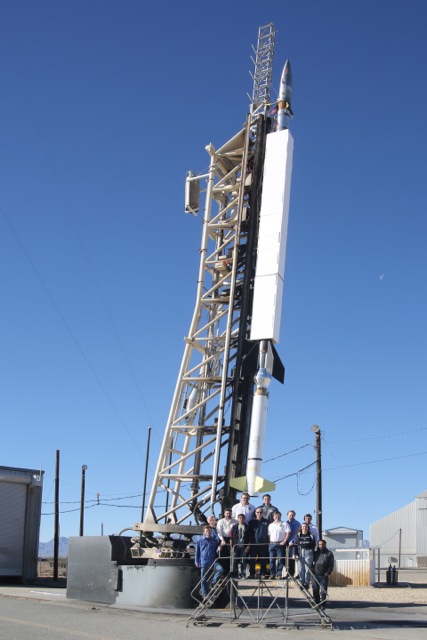A group lead by Dr. Massimiliano Galeazzi, physics professor and associate chair at the University of Miami College of Arts & Sciences, launched a rocket with an X-ray detector into outer space to study X-ray glow from our solar system and its surroundings.
“When we get light from outer space, it comes in different kinds of wavelengths,” said Dr. Galeazzi, “and some of the light is unseen by the visible eye. X-rays are nothing more than a different wavelength of light that we cannot see.
 |
Even though X-rays are invisible to humans on Earth, studying X-ray glow can reveal many hidden mysteries about our solar system. One such revelation discovered during a first rocket launch in December 2012 was the scientific confirmation that our solar system is inside of a bubble (about 300 light years long) of very hot gas (about a million degrees) caused by multiple supernova explosions that occurred 10 million years ago. The research and scientific findings from the first rocket launch in 2012 were published in the online journal Nature in 2014.
This past December, Dr. Galeazzi, with support from NASA, sent a second rocket into outer space – this time to find out the properties or characteristics that make up this bubble, or what astronomers call, “the Local Hot Bubble.” This second launch, once the data are fully analyzed, will also be able to accurately determine the exact direction of motion of the Sun in our Galaxy.
Similar to the first rocket launch in 2012, the second rocket lingered in outer space for only five minutes before falling back to Earth. It was enough time for Dr. Galeazzi, who is the principal investigator on the launch, and his team to get all the information they needed.
Dr. Galeazzi says most of his research centers on understanding the origin and structure of diffused X-ray radiation from our solar system and beyond. In addition to the rocket mission, Dr. Galeazzi is also working on data from X-ray satellites that are currently in orbit and he is part of larger team, lead by the Japan Aerospace Exploration Agency (JAXA), along with NASA and other international institutions, to send an X-ray satellite into outer space in February 2016.
January 26, 2016

